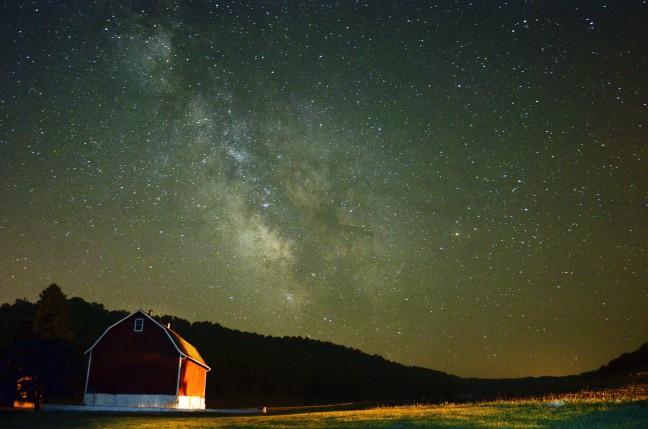Branch manager for the Jame Webb Space Telescope Near Infrared Imager and Stiltless Spectrograph Instrument team, Stephanie LaMassa lectured on her work and experiences with NASA to University of Wisconsin students and the community April 12. The lecture titled “The James Webb Space Telescope — Launching a New Astronomical Era” was hosted by the Astronomy Club.
LaMassa has worked at the Space Telescope Science Institute for six years, studying the evolution and growth of supermassive black holes and the interactions between star formation from a multi-wavelength perspective and active galactic nuclei.
The James Webb Space Telescope project began 25 years ago but officially launched Dec. 25, 2021 from French Guiana and released its first images in July 2022. It is the largest telescope sent into space so far and is composed of 18 mirrors in a honeycomb pattern. These mirrors make it possible to observe faint infrared light from galaxies millions of lightyears away, further away than even the Hubble Space Telescope can see.
LaMassa said the launch of the telescope was just the beginning of a successful start.
“Usually after a launch people breathe a huge sigh of relief, but also the work is just beginning,” LaMassa said.
In the time following the launch, teams like LaMassa’s at the Space Telescope Science Institute were involved in internal calibrations, finding the best focus and ultimately, determining if the telescope was working to conduct science.
LaMassa said nearly a year after first releasing scientific data and images, the performance of the James Webb Space Telescope is exceeding expectations and continues to produce results revolutionizing astronomy. She credits this to the perseverance and dedication of over 20,000 scientists, engineers and technicians who have worked on the telescope.
“I think it’s a testament to what we can achieve when we leverage talented folks from across the world and from diverse backgrounds working together towards a shared goal,” LaMassa said.
LaMassa also gave a colloquium talk Thursday at 3:30 p.m. in 4421 Sterling Hall about her work on x-ray active galactic nuclei.
The Astronomy Club encourages students of all majors to join them in the discussion of space news, learning how to capture images of the cosmos and participating in outreach events including their star parties. The club typically meets Thursdays at 7 p.m. in 4421 Sterling Hall.


